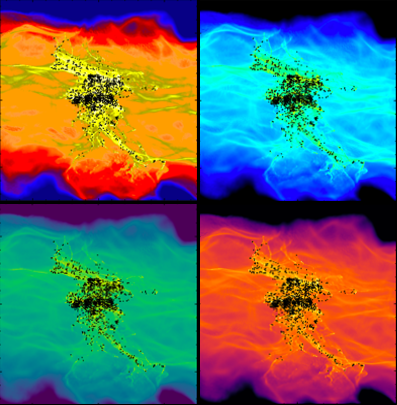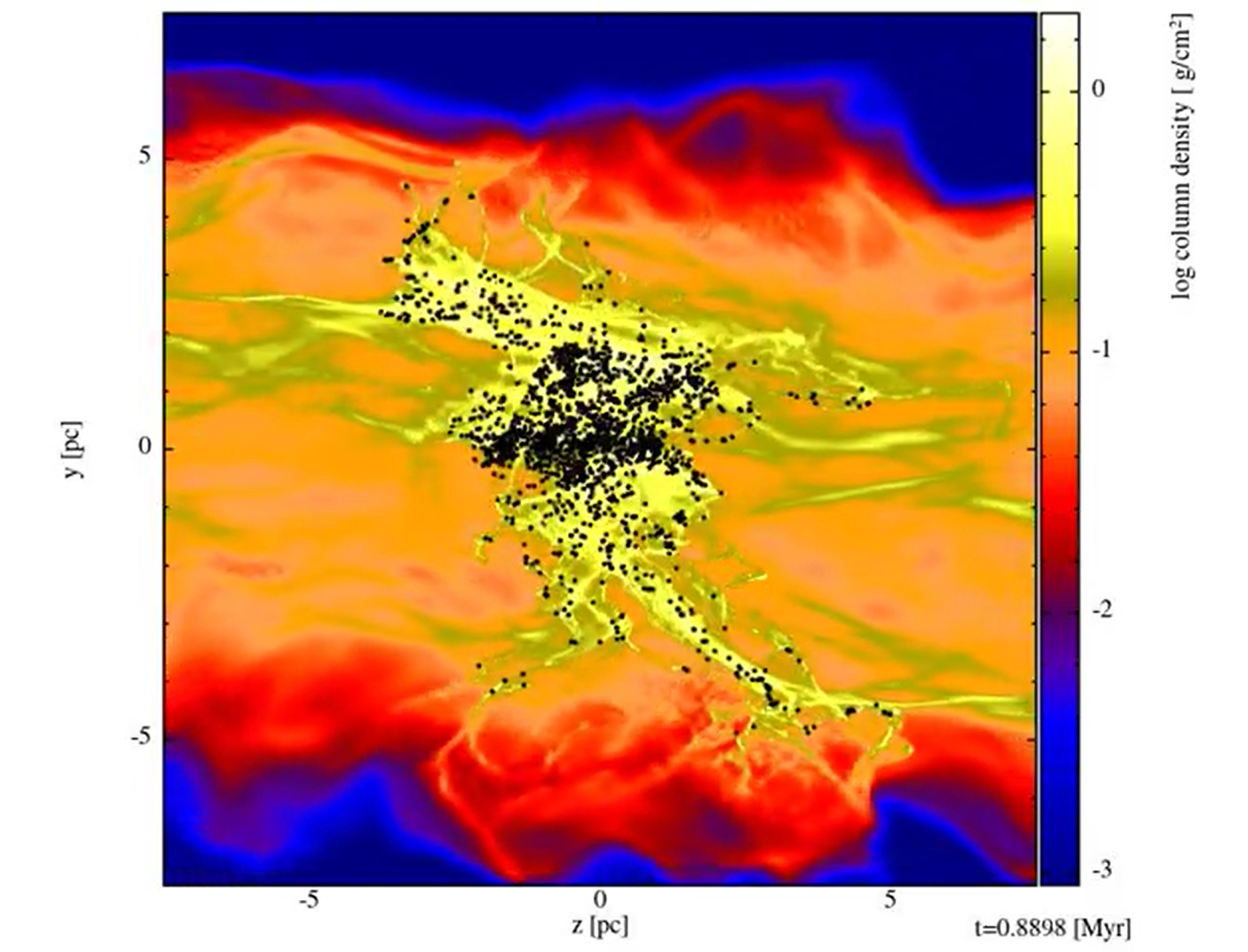Research
Overview
A brief introduction of young massive star clusters, cloud-cloud collisions, and why understanding the formation of young massive clusters is important to astronomy.
Formation of young massive clusters via cloud-cloud collision
We use PHANTOM, a smoothed particle hydrodynamics FORTRAN code for astrophysics to perform my cloud-cloud collision simulations. We investigate the initial conditions, notably the collision speed, the level of turbulence, and the initial density of the clouds needed to form massive clusters within a small timescale. We use various analysis methods such as signal filtering and DBSCAN clustering algorithm to measure the star formation rates and quantify the massive clusters formed in the simulations.
Recently, I work with Dr Steven Rieder to use AMUSE to recreate some of my previous PHANTOM simulations, in hope of creating clusters that better resemble real massive stellar clusters.

Figure shows an 18,000 solar mass cluster formed through the collision of two giant molecular clouds at about 20 km/s relative to each other. The simulation was done using PHANTOM (Price et al. 2018) and visualised using SPLASH (Price 2007).
Research poster in pdf format can be downloaded here.

